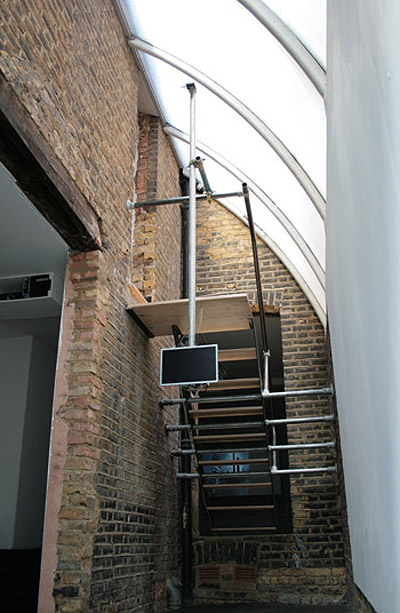the Agency |

_______________________________________________________________ Binary Code, Installation View, Rob Smith, Skyspace Mono, 2010
_______________________________________________________________ Binary Code, Installation View, Rafael Rozendaal, The Persistance of Sadness, 2010
_______________________________________________________________ Binary Code, Installation View, Anthony Gross, 1000 Years at the Poolside, 2011
_______________________________________________________________ Binary Code, Installation View, Rob Smith, Scanner, 2011
_______________________________________________________________ Binary Code, detail, Rob Smith Skyspace Mono, 2011
_______________________________________________________________ Binary Code, Anthony Gross, Animal Kids, still imgae, 2011
_______________________________________________________________ Binary Code, Rafael Rozendaal, Mondrian, still from live website, 2011
|
____________________________Binary CodeRob Smith, Rafael Rozendaal, Anthony Gross The artists Rob Smith (UK), Rafael Rozendaal ( NL) and Anthony Gross (UK) all work usingdigital methods and frameworks available only via or on the internet in order to create original artworks. All artists are making work for and showing in established fine art venues as opposed to having a practice, which is exclusively established under the specific heading of digital art. The exhibition brings together three very different approaches of conceptual art practice in the digital age presented as installation or projection. Binary Code View refers to the language computers utilise to translate analogue information or alternatively to generate new binary combinations and artifical intelligence(ai). The binary code is the use of the variational combinations of 0 and 1, which form the basis for all information displayed on our computer screens. It is nothing new anymore, however, the use of this language for fine art practice has been quite limited so far and its display when occurring on the net outside of conventional exhibition venues not accessible so far to the mainstream consumer of the arts. This is currently changing with the majority of print publications now establishing digital versions and internet specific forums such as youtube and individual websites becoming acceptable exhibition platforms, gradually either equal in status to an analogue exhibition or on occasion credibly replacing the need for a physical venue. This shift, which occurs through the establishment of binary code as universal language, allows for new variations in the artistic language as well as completely new forums or expressions, some of which may legitimately exist only in the virtual realm. Rob Smith, with his colour sample works re-examines the representation of landscape as well as negotiating a new take on abstraction via digital means. The colour sample pieces are recorded and mixed live on site using portable technology. The video images are scanned pixel-by-pixel displaying the individual colours of the landscape as it is gradually revealed. The works take the form of live feeds, online presentations such as his recent commission for Art Review Project Space or presented as a projection in a gallery, live or recorded. Rob Smith has recently utilised mobile internet technologies to realise Field Broadcast a live broadcasting project working in collaboration with Rebecca Birch and Projeckt. Rafael Rozendaal presents his work on the worldwide web. He works on his own or as part of the artistic umbrella of neen, originated by Miltos Manetas with Angelo Plessas and Rafael Rozendaal and umbrella to many others. neen has produced the first published definition of art in the digital age as 1. a web-based artwork (one-piece-in-a-domain) * , 2. a sentimental work made with computer or in reference to computer , 3. a self-generated artwork created by an artificial intelligence or a network. Each piece by Rafael Rozendaal presents itself as a website with its own url and unique artwork, which exists as a permanent exhibit on the worldwide web. As such it may be exhibited or purchased, as long as it continues existing on a suitable server. Aesthetically Rozendaal no longer refers to analogue imagery but generates all visual information with vector graphics and animation techniques, whilst also continuing to apply the work within conventional installation practice. Anthony Gross developed the concept of the found object in the digital age and utilizes graphic freeware as found on the internet to assemble film pieces . The process of assemblage give Gross the freedom to direct his films according to his own scripts and yet he accepts the limitations which come with the exclusive use of freeware , which makes the stopframe animations simple and not as smooth as commercial applications would allow. The use of freeware or abandonware as well as free samples, is the toolkit readily available on the internet, which by way of its inaugural definition offers an unpoliced virtual space for the upload and download , i.e. exchange of any information priced or unpriced. Gross exploits this communal internet space to generate animations that dwell on the strange artifacts between digital objects . Whilst all three artists make use of the language of binary code their references are equally indebted to analogue art history from Mondrian to Naumann and beyond. The exhibition will present works as videos fed from laptops displaying urls, digital frames and projections from livestreams, but also exist as a physical manifestation of installations utilizing mirrors, work specific framing devices and sculptural objects .
|